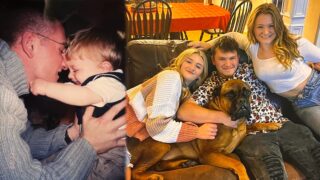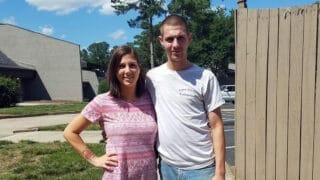
Daniel was named “Soldier of the Year,” and had a promising military career. But, after two tours in Afghanistan, his PTSD led him to addiction. His mother recounts his story.
On a snowy day in January of 1987, I gave birth to my oldest son, Daniel. He grew up to be handsome and kind with a generous spirit, brilliant mind and a deep desire to make the world a better place. He chose to join the Army as a way to do that.
Daniel became an Intelligence Analyst for the 82nd Airborne 7th Special Forces Group, and in 2009 was named the 7th SFG “Soldier of the Year.” When he returned from his second deployment to Kandahar, Afghanistan, Daniel brought PTSD home with him.
The Army gave him the opportunity to go to college as an active duty soldier, which would allow him to become an officer. He chose the University of New Hampshire, doing quite well until his final semester. It was then that a “friend” saw he was struggling and gave him something “to help.” He became a heroin addict.
When my husband and I found out, we brought him to his ROTC Commander who immediately made arrangements for him to be checked out by the mental health professionals at West Point. At West Point, he was finally diagnosed with PTSD and sent to a military rehab program in Connecticut. He spent nine weeks there, and came out looking very healthy, but was still struggling with his mental health issues.
Daniel returned to Fort Bragg without his degree and worked for a year on base. His Commander then told him he had to take a two-week leave because he’d been working too many hours (to keep his mind off the PTSD). On his first night of leave, he overdosed and ended up on life support in his local hospital. When the Commander learned of this, he immediately started “Other Than Honorable Discharge” proceedings. When my son was well, he fought this and was ultimately awarded an “Honorable Discharge.”
Daniel left the Army in September of 2014, immediately applying for disability and going to work. At first he was very successful in his work, but soon the PTSD took over. His disability declaration finally came in early November of 2015, at which point an appointment was scheduled for treatment to begin on January 21, 2016.
Daniel and I talked every day and I knew he was struggling, but was doing his best to hold on until that appointment. After New Year’s Eve 2015, I was not able to reach him. A week later, on January 8, 2016, we called the police to do a welfare check.
They found my beautiful boy in his bathroom, wrapped in a towel and sitting on the floor with a toothbrush in his hand. The sink and shower water was running. He had been trying to take care of himself, but he had died from an infection that had developed because of his IV drug use.
On another cold January day, just a few weeks before his 29th birthday, we had a funeral. On a beautiful and sunny Mother’s Day in 2016 we buried Daniel’s ashes.
Shared by Daniel’s Mom, February 2018

Share Your Story
This epidemic has given us one common experience: we have all become experts in our own way. At SAFE Project, we believe that we strengthen one another by sharing our stories. Whether you are in recovery, lost a loved one, or are making a difference in your community, you can help others on this journey. We'd like to hear from you.
Recent Stories
-

-
 Story
StoryLandin’s Story
-
 Story
StoryMy Brother’s Story

